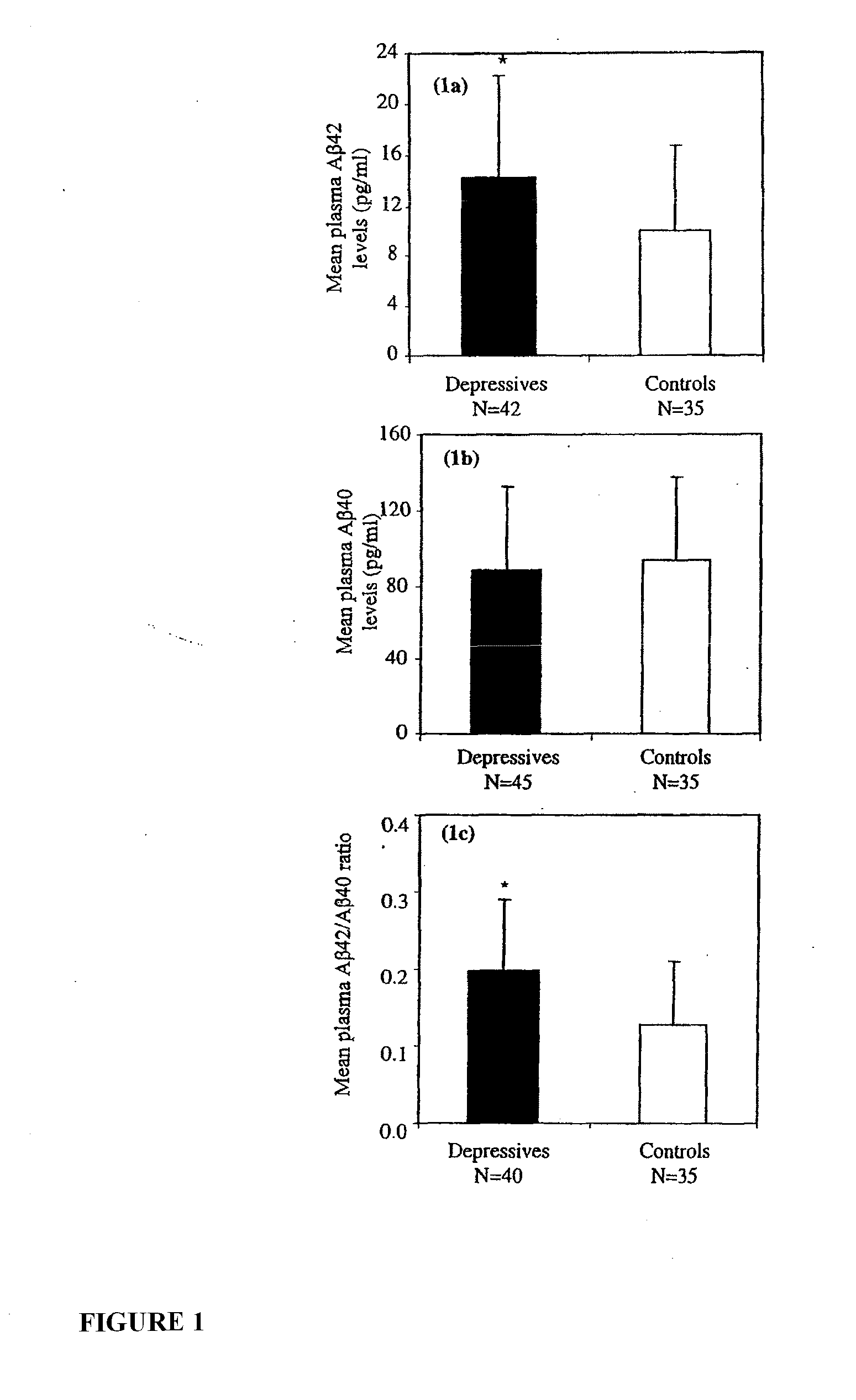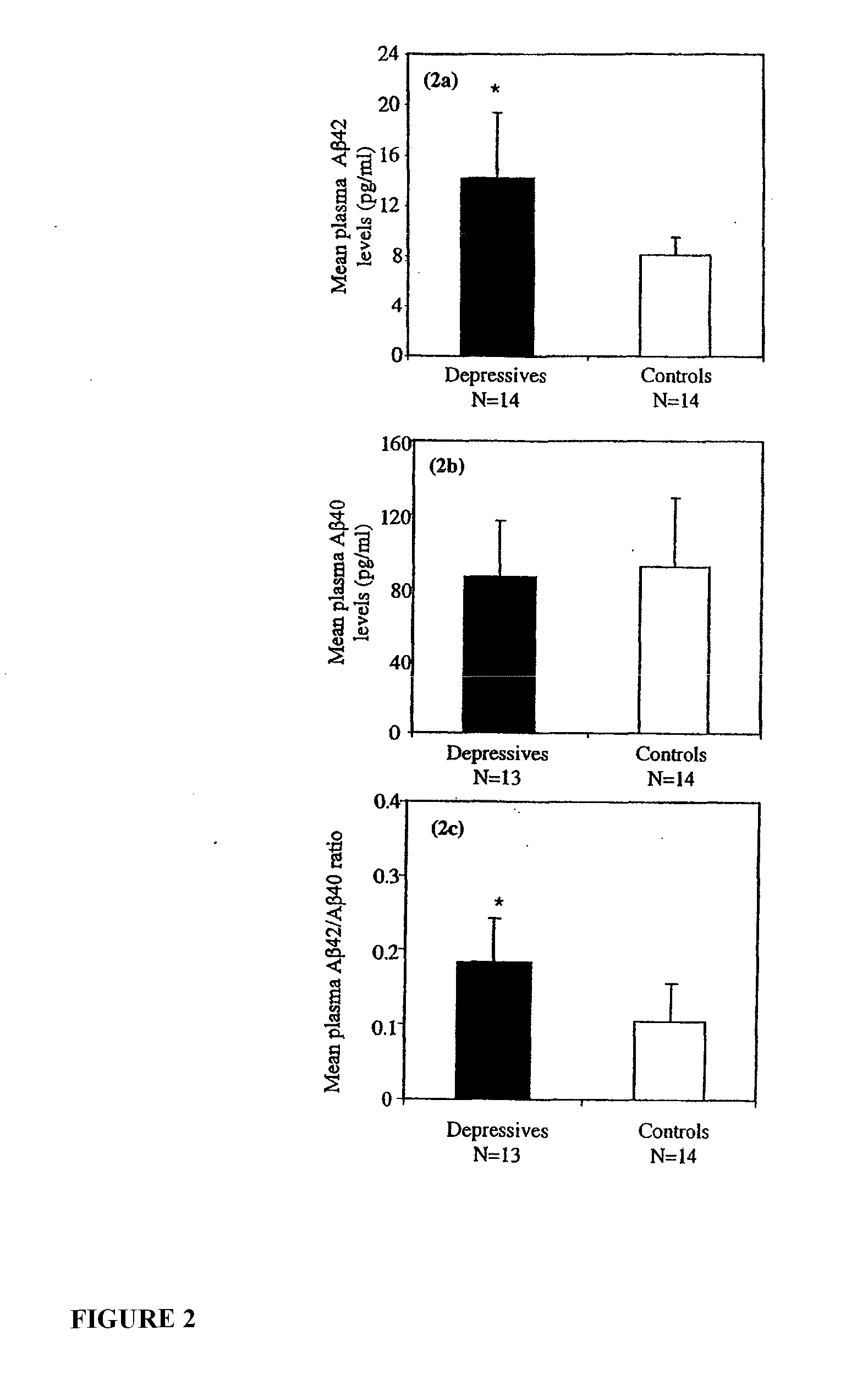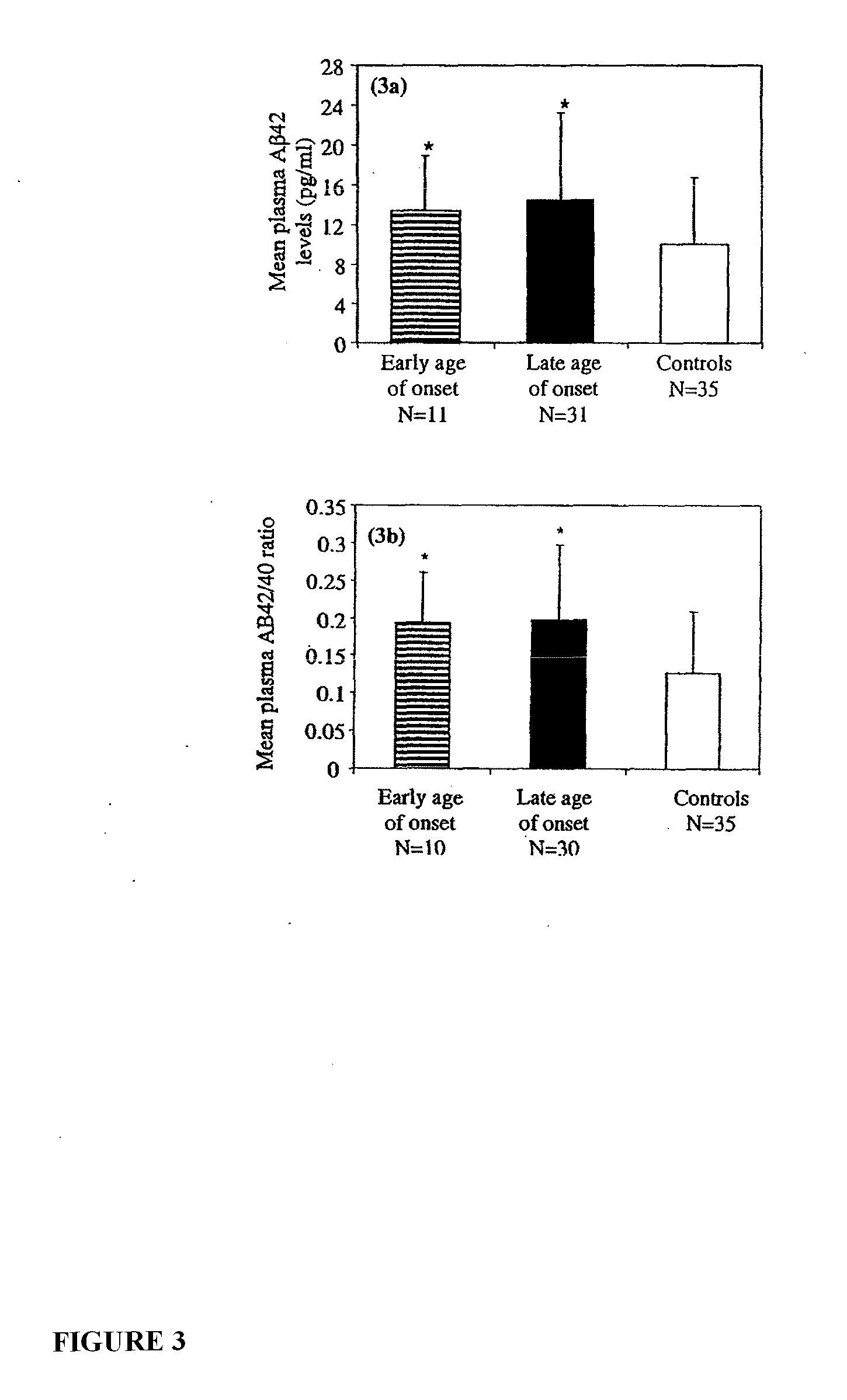Methods and compositions for diagnosing and treating mood disorders
a mood disorder and composition technology, applied in the field of mood disorders, can solve the problems of lack of social support network, major depression generation after generation, and significant increase in the number of suicides in this population, and achieve the effects of rapid and sensitive screening, increased plasma levels of amyloid beta protein, and reduced cerebrospinal fluid levels
- Summary
- Abstract
- Description
- Claims
- Application Information
AI Technical Summary
Benefits of technology
Problems solved by technology
Method used
Image
Examples
example 1
Elevation in Plasma AB 42 in Geriatric Depression
Materials and Methods
[0283]Participants:
[0284]Plasma samples were obtained from a subset of LLMD patients (N=47; 36 females) who had participated in a double blind randomized comparison of nortriptyline and paroxetine. The clinical characteristics of the LLMD patient samples were previously described (Mulsant, et al., J Clin Psychiatry, 1999, 60 Suppl 20:16-20) and are briefly summarized here. The sample included inpatients and outpatients with LLMD and all subjects underwent comprehensive assessments consisting of a psychiatric history and mental status evaluation, social and medical history, physical exam, and laboratory tests. The Structured Clinical Interview for DSM-IV Axis I disorders (SCID-IV), the 17-item Hamilton Rating Scale for Depression (HAM-D, Hamilton, 1960; mean=21.3, sd=4.0), and the Mini-Mental State Examination (MMSE (Folstein, et al., J Psychiatr Res, 1975, 12: 189-198); mean=26.4, sd=3.0) were employed for the eva...
example 2
Methods
Subjects
[0312]Out of a total sample of 131 healthy elderly subjects, 51 agreed to a lumbar puncture. Out of these, analysis was restricted to 47 individuals, who had a high level of cognitive function (MMSE score of 28 or higher) and no gross white matter pathology as determined through MRI.
TABLE IVDemographicsControlsDepressedN = 19N = 28T-test or X2Age, in years68.1 (7.3)66.5 (5.4)t(45) = .835, p = .408Education, in16.7 (2.7)16.5 (2.7)t(44) = .274, p = .785 ayearsBMI28.1 (4.7)28.8 (6.7)t(45) = .378, p = .707HAM-D 1.2 (1.9)14.9 (8.8)t(45) = 8.02, p MMSE29.5 (.5)29.8 (.6)t(45) = 1.56, p = .126Diabetes, %21% (4)18% (5)X2(1) = .08, p = .785(n)Female, % (n)63% (12)36% (10)X2(1) = 2.410, p = .121APOE4, % (n)26% (5)39% (11)X2(1) = .369, p = .544Note.Values are means (standard deviations) unless otherwise indicated.BMI = Body-mass index;HAM-D = Hamilton Depression Scale;MMSE = Mini-mental State Exam score;a = one subject's years of education was not available;* = significant at the...
example 3
Materials and Methods
[0325]Twenty-eight individuals who had a diagnosis of major depressive disorder (MDD) were recruited for a baseline lumbar puncture and CSF studies. These individuals were free of dementia, cognitive impairment or apparent brain damage, as determined by psychiatric evaluation using DSM-IV, various psychometric tests and brain MRI scans. All of these participants were investigated for their cognitive abilities, for the severity of their depression at the time of the LP, and for the levels of certain biomarkers, on blood and cerebro-spinal fluid (CSF). In particular, biomarkers were targeted which, based on our pilot data, were known to be associated with depression, either directly or indirectly. These were Aβ40, Aβ42 and BDNF.
[0326]Table VI below reports a few basic demographics about this population, including their cognitive ability as measured by a widely utilized screening test, the MMSE (which goes from 0 to 30) and the severity of their depressive symptoms...
PUM
| Property | Measurement | Unit |
|---|---|---|
| time | aaaaa | aaaaa |
| temperature | aaaaa | aaaaa |
| temperature | aaaaa | aaaaa |
Abstract
Description
Claims
Application Information
 Login to View More
Login to View More - R&D
- Intellectual Property
- Life Sciences
- Materials
- Tech Scout
- Unparalleled Data Quality
- Higher Quality Content
- 60% Fewer Hallucinations
Browse by: Latest US Patents, China's latest patents, Technical Efficacy Thesaurus, Application Domain, Technology Topic, Popular Technical Reports.
© 2025 PatSnap. All rights reserved.Legal|Privacy policy|Modern Slavery Act Transparency Statement|Sitemap|About US| Contact US: help@patsnap.com



